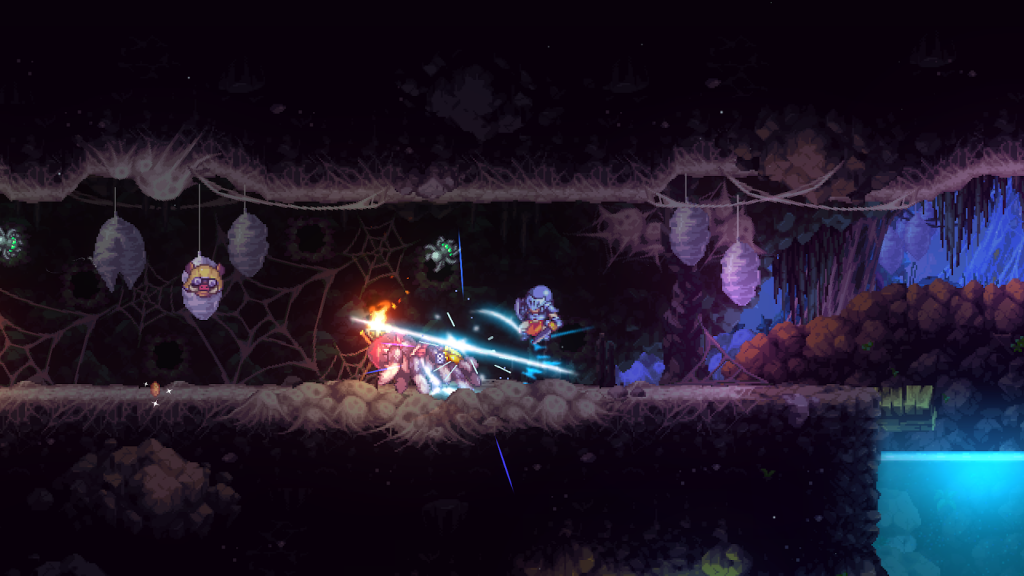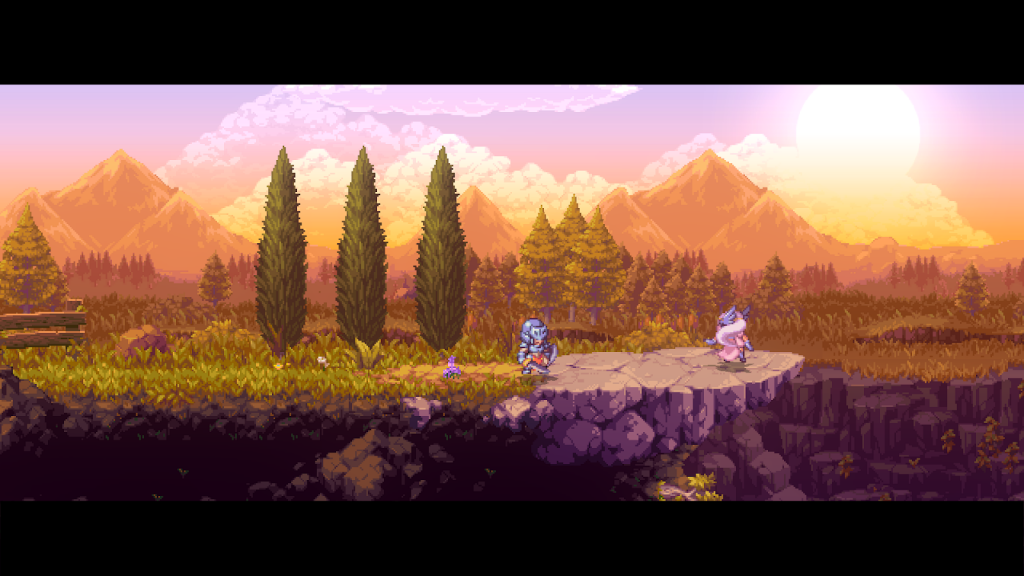Plenty of games threaten you with death, but few make walking into the light your first action. Souldiers does, and you’d best become familiar with death quick, because it’s a key part of its learning curve.
I’ve been slashing and dashing my way through Retro Forge’s Souldiers — an unforgiving Metroidvania with a charming, retro-style. Retro Forge wears their influences on their sleeves, with a visual aesthetic similar to the 16-bit era and gameplay not wholly dissimilar to the unforgiving nature of that console generation and the one before. It all starts off with your nation’s army preparing for another battle between the now shattered, three-kingdom alliance. You’re part of the army of your kingdom’s most famed General, and he’s spearheading the next big skirmish, right up until a clearly untrustworthy sorcerer suggests a new plan and… cut to the future… you’re all trapped in a cave while waiting to launch an ambush. A classic, sinister sorcerer power grab; the oldest trick in the book: the old swappy-trappy.
For the most part, the political reasoning for why you’re trapped to die in a cave doesn’t matter. What actually matters is that your commander, his lieutenants and his very large army take up the offer of the Valkyries to head off to the world between home and Valhalla: Terragaya. You’re sent off to a large, interconnected world, half-exploring and half-trailing the soldiers who entered before you. You weren’t technically dead, just trapped in a giant cave, which does change things a bit, but regardless of your reason for entering the portal to Terragaya, you’ll become familiar with death soon enough.
Souldiers is, at its core, a Metroidvania. You’ll unlock bombs, fire potions and more, as well as find keys and unlock new abilities. Each of these things will change how you play, and change the areas that you can reach through the world. After your first dead-end, boss-ish encounter you’ll unlock bombs, and after that point, you’ll almost always have at least two paths you can progress through.

Accompanying that crunchy Metroidvania core is an incredibly well-balanced RPG toolbox. Your character, which is one of three classes, starts off extremely squishy, but with persistence and/or manipulation of the random loot, you can start to bump up your stats. Levelling up is slow, but important, as you unlock new abilities. I played as the archer class, and on the first level-up, you learn a dodge ability that deals heavy damage to enemies if you can pull it off. Perhaps ‘If you can pull it off’ is highly appropriate here because Souldiers clearly takes great pride in combining NES and arcade-era difficulty with modern ‘soulslike’ dodging-based combat. Timing is key, and while it definitely gives you more than enough ways to get around enemies, there is a key way for most enemy types. You can dodge, jump, block and — in the case of the archer — dodge-shift beyond enemies.
It means that you can lose your entire health bar in a matter of seconds from respawning, but other times you can smash through dozens of enemies untouched.

There are a few things at play that keep the difficulty up and stop you from getting too confident. Obviously, I’ve mentioned the brutality: enemies hit hard. The enemy variety changes up very quickly, and as you transition between areas you leave behind weaker enemies while new enemies are slowly introduced, then served up alongside enemies from previous sections. Bosses, or larger enemies, introduce new attack types and often attack alongside smaller enemies who can overwhelm you if you don’t control them. Finally, most enemies respawn when you do, or if you choose to heal up at a save point. The latter is great for gaining experience, however, as enemies remain dangerous it means that you can sometimes get caught off-guard before even getting back to where you were before.
All of this said, it’s very easy to paint Souldiers as a game firmly planted in the past. That’s not the case, there’s quite a bit of modern design in here where others might have avoided it. The biggest example is probably in how the map works; you can find segments throughout the game which reveal areas you might have missed (including the generous amount of secret areas), rather than simply having to fill it out yourself. Perhaps most notable though is the effort that has gone into the animations. Everything is incredibly smooth and once you get used to enemy attack patterns it becomes a lot easier to read the smaller gestures and attack animations that simply couldn’t have been accommodated in earlier generations. When I talk about Dead Cells I often say that its combat is closer to a rhythm game, or a fighting game, due to the attack tells, frame-by-frame animations and careful attack hit-box design always being a little bit smaller than your dodge and jump capabilities. Calm, deliberate control can always outpace an enemy, and so confidence in your abilities is a key part of winning your way through.
Souldiers is launching in May for PC, Xbox, Playstation and Nintendo Switch.